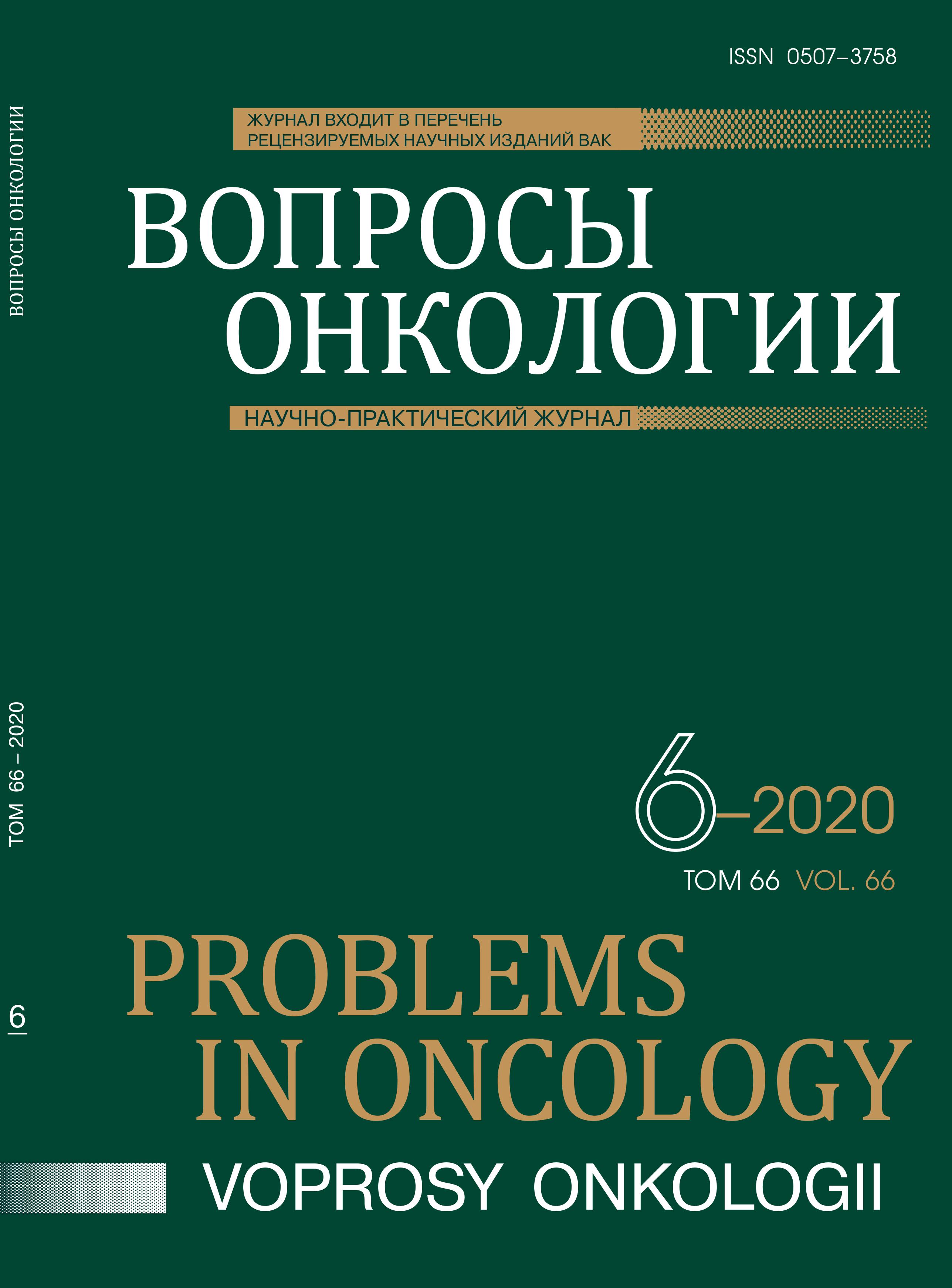Abstract
Background. Systems of plasminogen activation and biogenic amines are involved in carcinogenesis, but their relationship has not been established.
Aim – study of the quantitative specificity of biogenic amines in the skin and melanoma in urokinase-gene knockout mice.
Materials and methods. Levels of catecholamines, histamine, serotonin and 5-hydroxyindoleacetic acid (HIAA) were determined by ELISA in the skin and В16/F10 melanoma of urokinase (uPA) -gene knockout mice of both genders (n=24); С57ВL/6 mice (n=64) were controls (C).
Results. Differential characteristics of melanoma development in uPA-deficient mice included: an earlier onset of the primary tumor and its slow growth, more pronounced in females, in combination with hemorrhages in the lungs of males and solitary metastases in the lungs of females. This was facilitated by higher levels of norepinephrine in the skin of males/females – by 4.8/4.9 times, histamine – by 3.6/1.7 (p<0.05) times and serotonin – by 3.4/8.3 times. Dopamine accumulated in melanoma in all uPA-gene knockout mice: in females –1.6 times (p<0.05), in males – 2.1 times higher than in intact skin, with a 2.5 times reduction of norepinephrine in females. Levels of histamine decreased, but exceeded controls: in females – by 1.8 times (p<0.05), in males –by 3.5 times. Levels of serotonin in uPA-deficient females were as high, while in males they were 3.4 times lower than in intact skin.
Conclusions. The specificity of the aminergic system in the skin of uPA-gene knockout mice demonstrated the inhibition of local stress and contributed to the reduction of malignant potential of melanoma by increasing immune properties of the skin.
References
Pérez-Guijarro E., Day C.P., Merlino G., Zaidi M.R. Genetically engineered mouse models of melanoma. Cancer. 2017; 123(S11); 2089–2103. doi:10.1002/cncr.30684.
Tchernev G., Lozev I., Temelkova I. et al. Schizophrenia as Potential Trigger for Melanoma Development and Progression! The Psycho-Neuro-Endocrine-Oncology (P.N.E.O) Network! Open access Macedonian journal of medical sciences. 2018; 6(8): 1442–1445. doi:10.3889/oamjms.2018.276.
Shapiro R.L., Duquette J.G., Roses D.F. et al. Induction of primary cutaneous melanocytic neoplasms in urokinase-type plasminogen activator (uPA)-deficient and wild-type mice: cellular blue nevi invade but do not progress to malignant melanoma in uPA-deficient animals. Cancer Res. 1996; 56(15): 3597–3604.
Wyganowska-Świątkowska M., Tarnowski M., Murtagh D., Skrzypczak-Jankun E., Jankun J. Proteolysis is the most fundamental property of malignancy and its inhibition may be used therapeutically (Review). International journal of molecular medicine. 2018; 43(1): 15–25. doi:10.3892/ijmm.2018.3983.
Cathcart J., Pulkoski-Gross A., Cao J. Targeting matrix metalloproteinases in cancer: Bringing new life to old ideas. Genes Dis. 2015; 2: 26–34. doi: 10.1016/j.gendis.2014.12.002.
Shay G., Lynch C.C., Fingleton B. Moving targets: Emerging roles for MMPs in cancer progression and metastasis. Matrix Biol. 2015; 44–46: 200–206. doi: 10.1016/j.matbio.2015.01.019.
Lampreht Tratar U., Horvat S., Cemazar M.Transgenic Mouse Modelsin Cancer Research. Frontiersinoncology. 2018; 8: 268. doi:10.3389/fonc.2018.00268.
Roman I.I., Constantin A.M., Marina M.E., Orasan R.I. The role of hormones in the pathogenesis of psoriasis vulgaris. Clujul medical (1957). 2016; 89(1): 11–18.doi:10.15386/cjmed-505.
Slominski A.T., Zmijewski M.A., Skobowiat C. et al. Sensing the environment: regulation of local and global homeostasis by the skin’s neuroendocrine system. Adv Anat Embryol Cell Biol. 2012; 212: v, vii, 1–115.
Wu H., Zhao Y., Huang Q. et al. NK1R/5-HT1AR interaction is related to the regulation of melanogenesis. FASEBJ. 2018; 32 (6): 3193-3214. doi: 10.1096/fj.201700564RR.
Slominski A, Wortsman J. Neuroendocrinology of the skin. Endocrine Rev. 2000; 21: 457–487.
De Benedetto A., Yoshida T., Fridy S. et al. Histamine and Skin Barrier: Are Histamine Antagonists Useful for the Prevention or Treatment of Atopic Dermatitis? J Clin Med. 2015; 4: 741–755.
De Giorgi V., Grazzini M., Benemei S. et al. Propranolol for off-label treatment of patients with melanoma: results from a cohort study. JAMA Oncology. 2018; 4(2, article e172908). doi: 10.1001/jamaoncol.2017.2908.
Wu H.L., Pang S.L., Liu Q.Z., Wang Q., Cai M. X., Shang J. 5-HT1A/1B receptors as targets for optimizing pigmentary responses in C57BL/6 mouse skin to stress. PloS one. 2014; 9(2): e89663. doi:10.1371/journal.pone.0089663.

This work is licensed under a Creative Commons Attribution-NonCommercial-NoDerivatives 4.0 International License.
© АННМО «Вопросы онкологии», Copyright (c) 2020
